MARIANI’S
September 14, 2008
NEWSLETTER

Marlon Brando as Stanley Kowalski in "Streetcar Named Desire" (1951)
NEW! Click esquire.com
to go to my new column at Esquire Magazine.
ARCHIVE: Readers may now access
an
Archive of all past newsletters--each annotated--dating back to July,
2003, by simply clicking on www.johnmariani.com/archive
SUBSCRIBE AND
UN-SUBSCRIBE: You may subscribe anyone you wish
to this newsletter--free of charge--by
clicking here.
In
This Issue
NEW
YORK CORNER: Matsugen by John Mariani
QUICK BYTES
~~~~~~~~~~~
CABO SAN LUCAS
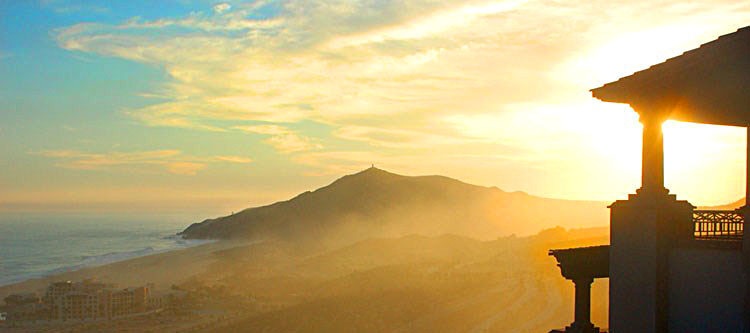
by
Edward Brivio
Photos by Bobby Pirillo
Tumbling down a high cliff overlooking the
Pacific
Ocean at the southern tip of Baja California, is the Pueblo
Bonito
Sunset Beach Resort in Cabo San
Lucas.
Half-way up the hill (actually
about 25 stories above
sea-level) is the grand entranceway: a flagstone-paved courtyard built
around a hand-carved stone fountain. Inside, the marble lobby is
decorated with beautiful antiques and artifacts, among them, a massive
silver altar piece from the 19th century, a larger than life-size,
polychrome statue of the Archangel Michael, and two life-size wicker katrinas, that
is, the elegantly dressed skeletons that are
unique to
Mexican culture. A collection of 17th and 18th Century art, as well as
tasteful, hand-crafted reproductions complete the luxurious Colonial
decor.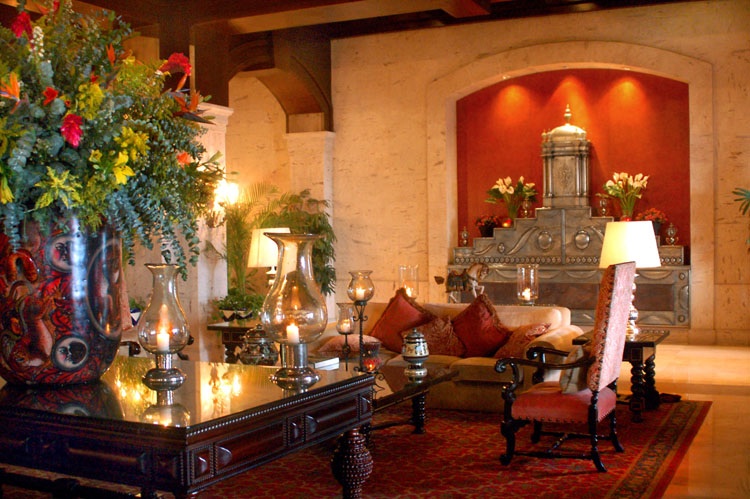
The
“hacienda-style” architecture works well for this sprawling complex
of multi-story buildings, and everything looks fresh and brand
new. Well-manicured lawns and flowerbeds are maintained by a small army
of gardeners, while another small army takes care of housekeeping,
transportation, and all-around guest wish-fulfillment. Accommodations
are world-class, with over-sized, luxurious suites, and villas, all
with terraces facing the ocean, perched at various elevations. Our
room, almost at the top of the hill, was a Superior executive corner
suite that was very large (living room with sleeper sofa, dining area,
full kitchen, bedroom with two king beds as well as a seating area, and
2 marble-clad full bathrooms with walk-in showers, one with a bathtub
as well) and featured a terrace, almost as big as the room, with a
roomy hot tub.
The resort is extensive, and since it is
more-or-less
vertical,
mobility is provided by chauffeured golf carts that seem to appear at
will. The thought of having to rely on the carts may seem annoying at
first, in practice, however, they are usually already waiting for you.
The rare times when we did have to wait, usually at dinner time, it was
never longer than a minute, at most two. Besides, each pickup spot has
its own phone, so you never feet stranded.
The hotel is a busy place, and the three pool
areas on
different levels fill up fast, but you can usually find a space,
especially at the Skypool (below),
at the top of the complex with breathtaking
views of beach, cliffs, sunset, and sea.
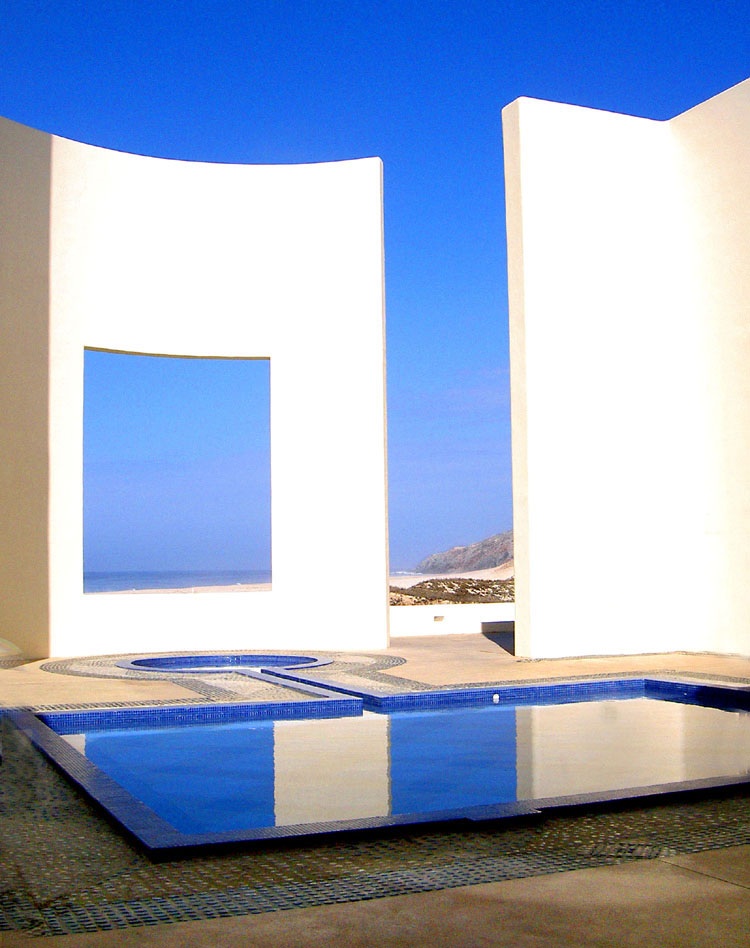 Located
one level down from the lobby, the resort’s
signature restaurant, La Frida,
features the contemporary alta
cocina
mexicana of executive chef Antonio de Livier. How fitting to
name a
great Mexican restaurant after Frida Kahlo, one of Mexico’s great
artists. The snug jewel-box of a dining room transports you to an
affluent hacienda of the 20‘s or 30‘s, with its flagstone floor, heavy
brocade hangings, marble wainscoting, and a coffered, cedar wood
ceiling punctuated by large exposed beams. Massive, upholstered, deeply
comfortable Spanish-Colonial style armchairs surround large, spacious
tables, all softly lit by candles, elegant, wrought-iron
sconces, and chandeliers. Voices are hushed, dress is “tropical
beachfront” elegant; the wait staff appears to move “on little
cat's feet”; glasses are refilled
and dishes removed unobtrusively. Al fresco dining is available on the
terrace overlooking the ocean.
Located
one level down from the lobby, the resort’s
signature restaurant, La Frida,
features the contemporary alta
cocina
mexicana of executive chef Antonio de Livier. How fitting to
name a
great Mexican restaurant after Frida Kahlo, one of Mexico’s great
artists. The snug jewel-box of a dining room transports you to an
affluent hacienda of the 20‘s or 30‘s, with its flagstone floor, heavy
brocade hangings, marble wainscoting, and a coffered, cedar wood
ceiling punctuated by large exposed beams. Massive, upholstered, deeply
comfortable Spanish-Colonial style armchairs surround large, spacious
tables, all softly lit by candles, elegant, wrought-iron
sconces, and chandeliers. Voices are hushed, dress is “tropical
beachfront” elegant; the wait staff appears to move “on little
cat's feet”; glasses are refilled
and dishes removed unobtrusively. Al fresco dining is available on the
terrace overlooking the ocean.
Frida Kahlo artifacts embellish the walls
alongside
reproductions of her beautiful paintings, as well as original art
inspired by them. I couldn’t take my eyes off one enormous one, the
dimensions of a Jackson Pollock canvas; in the center, one of her
self-portraits with two parrots, the other of women in those
massive
white headdresses, and colorful, heavily embroidered, flower-covered
dresses worn at fiestas.
Also “channeling” Frida, in the best sense,
and drawing
on a seemingly endless Mexican songbook, is the resort’s own, in-house
chanteuse, the
incomparable, and beautiful Luna Itzel (below). Her gorgeous voice,
exquisite
diction, and spot-on dramatic delivery can, in one song, draw every bit
of pathos out of love‘s betrayal, and in the next, rise above it all
with an equally poignant restraint and understatement. It’s the
kind of small-scale, intimate, world-class musical performance and
talent of no more than local renown that one can find all over
Mexico.
Chef de Livier likes to give his dishes a
sense of place.
Take the Huejotzingo fava
bean soup we began with. Flavored with spicy toasted chile de arbol and a touch of
mint, it was rich, creamy, and delicious. As a few seconds on the
laptop will tell you, Huejotzingo is a small town at the foot of Mount
Popocatepetl in the state of Puebla, famous 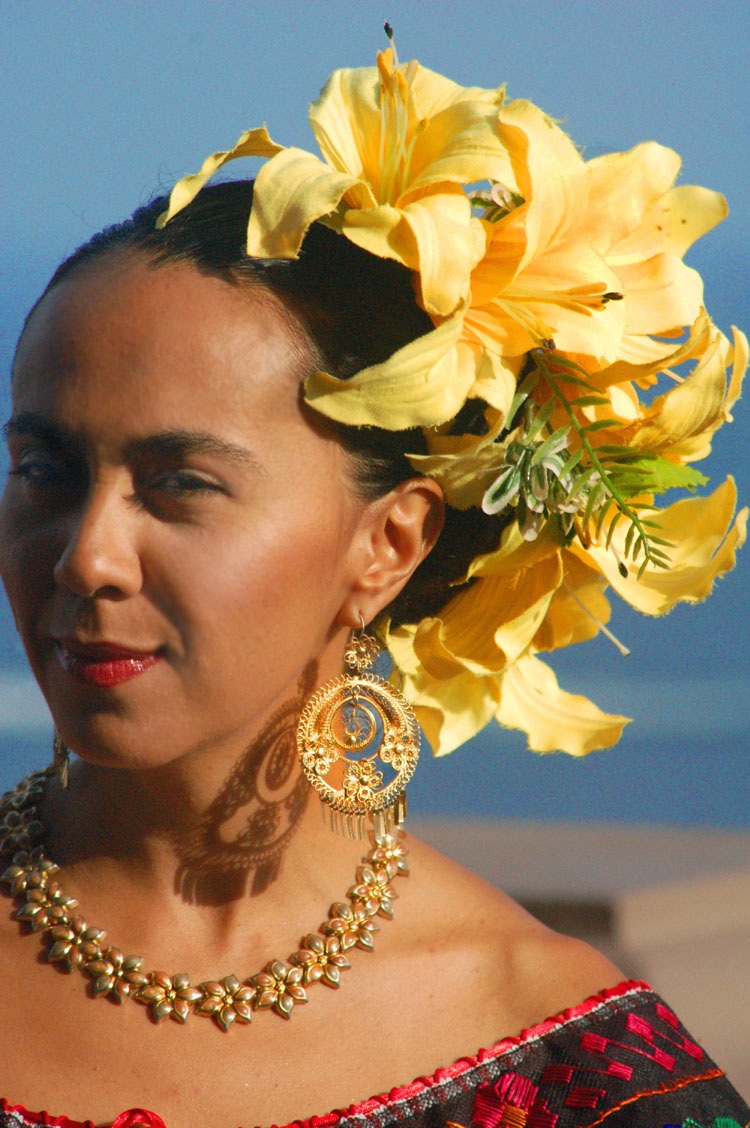 for
its richly-decorated,
16th century fortress-monastery. I’m not sure what all this has to do
with favas, but another name has been added to my shortlist of places
worth a visit.
for
its richly-decorated,
16th century fortress-monastery. I’m not sure what all this has to do
with favas, but another name has been added to my shortlist of places
worth a visit.
I also don’t know who “Don Agustino” was, but
his eponymous
Adobo pork empanadas--thin
and crusty pastry enclosing spicy
slow-braised pork flavored with chiltepin,
a very hot chile pepper that
grows wild in Mexico--do credit to his memory. Another snippet
of Mexican food lore comes with the Cahuamanta-style crabmeat tostadas,
a wonderful fresh lump crab meat stew, cooked quickly with tomatoes,
olives, and capers, and served over crisp corn tortillas, with the
tapenade
complementing rather than overwhelming the sweet shellfish.
“Cahuamanta” refers to a chunky seafood stew
from Hermosillo, originally made from sea turtle (cahuama), now from
manta ray.
De Livier proudly acknowledges that his home
town,
Mexicali, “has the best Chinese food in Mexico, bar none," and his
Asian-inspired Sea Bass Veronica was little short of divine. (Veronica not Veronique, so don’t
expect grapes.) Finished with lemon-thyme butter,
accompanied by sautéed shrimp and shiitake mushrooms, all in a
dark, delicious ginger-soy broth, the fish was perfectly grilled and
super crisp, and the flavor pure bliss.
If you’re good and hungry, by all means order the barbacoa braised lamb shank.
Appropriately massive, the slowly braised,
then broiled shank was all dark mahogany meaty goodness served over
ever-so-slightly bitter broccoli di rabe to cut its richness. Barbacoa
originally referred to the Mexican version of barbecue, in which large
cuts of meat, or even a whole animal, were slow-cooked in a hole dug in
the ground, filled with coals, and covered with maguey leaves.
Nowadays, it refers to any meat that’s slow cooked to make it tender.
I‘ve always loved tres leches cakes: How
thoughtful to
serve cake that’s already been dunked. “Besos de Paulina” comprised three
different mini-cakes: pecan, chocolate, and vanilla, served alongside a
tiny pitcher of the tres leches
mixture to soak them with, if so
desired, a second time. The banana and white chocolate cream pie
with peanut butter sauce, however, may have been the high point of the
evening, silky smooth, and with an intense banana flavor. The peanut
butter sauce, however, refined and subtle as it was (no mean feat,) I
thought expendable.
Diners here expect the best, and La Frida
provides it in
the person of award-winning sommelier, Juan Carlos Flores, who won the
5 Star Diamond Award for Best North American Sommelier in 2005, at age
28. Wine is no afterthought here, and Juan Carlos not only has a
thorough knowledge of the world’s wines at his fingertips, but also a
deep love for his own country’s efforts. Mexican wines are in the
throes of a quality revolution started sometime in the mid-90‘s. If
you’d like to take part in same, however small, then turn to the short
but selective list of national wines.
More than anyone else, oenologist Hugo
D’Acosta of the Casa de Piedra
winery, is
responsible for the sea-change in Mexican
wines, as well as for the best wines coming out of another Ensenada
winery, Adobe Guadalupe,
founded by Don Miller. Juan Carlos suggested
one of their archangel series,
various grape blends named after the roster of archangels. (Wonderful
how bits of religious trivia accumulated in grammar school,pop-up
again when you least expect it.)
The Adobe
Guadalupe, “Gabriel” 2005, a blend of 55%
Merlot, 28% Malbec, 11 % Cabernet Sauvignon, and 6% Cabernet Franc,
aged 11 months in barriques, was a deep, dark wine, with plenty of
fresh, New World fruit, but also showed a welcome bit of roughness on
the
palate from the acids and tannins, and a good finish. It was exactly
what I had hoped for. At $99 it wasn’t cheap, but something this good,
made in such small amounts (1,100 cases) should cost a lot more.
First courses: $11 to $21; Main courses:
$28-$42; Desserts:
$12 to $14.
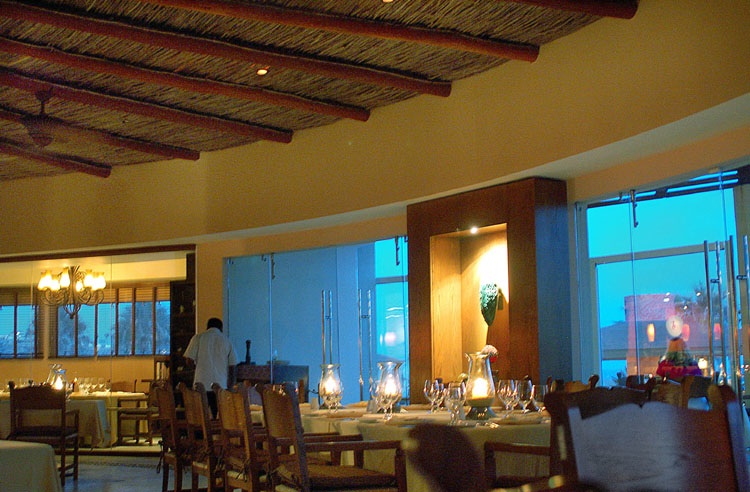 For a
change from the family-friendly ambiance, and
merrymaking of the Pueblo Bonito Sunset, take a short five-minute ride
on
the free hotel shuttle to what many consider the jewel in the crown
here, the Pueblo Bonito Pacifica
Resort. Situated at sea level, right
off the sand, its full name is the PB Pacifica Holistic Retreat and
Spa, and for once the “holistic retreat and spa” part can be taken
literally and not dismissed as meaningless hype. As soon as you
arrive and look through an entranceway of floor-to-ceiling, pane-less
glass, across a soaring, circular lobby of off-white stone, through
more unglazed glass to the shimmering Pacific and the pure blue sky
beyond, you realize you’ve found a special place, somewhere as far
removed from the everyday as possible. No children under 16 are
allowed,
and the quiet, tranquil atmosphere really does make the whole resort
feel like the hushed precincts of a luxury spa. Even the pool areas are
oases of serenity. You’re as close to the ocean here--the main pools,
one of which is huge, are but feet from the beach-- as you can get. The
constant crashing of the surf provides the perfect, eons-old,
soundtrack.
For a
change from the family-friendly ambiance, and
merrymaking of the Pueblo Bonito Sunset, take a short five-minute ride
on
the free hotel shuttle to what many consider the jewel in the crown
here, the Pueblo Bonito Pacifica
Resort. Situated at sea level, right
off the sand, its full name is the PB Pacifica Holistic Retreat and
Spa, and for once the “holistic retreat and spa” part can be taken
literally and not dismissed as meaningless hype. As soon as you
arrive and look through an entranceway of floor-to-ceiling, pane-less
glass, across a soaring, circular lobby of off-white stone, through
more unglazed glass to the shimmering Pacific and the pure blue sky
beyond, you realize you’ve found a special place, somewhere as far
removed from the everyday as possible. No children under 16 are
allowed,
and the quiet, tranquil atmosphere really does make the whole resort
feel like the hushed precincts of a luxury spa. Even the pool areas are
oases of serenity. You’re as close to the ocean here--the main pools,
one of which is huge, are but feet from the beach-- as you can get. The
constant crashing of the surf provides the perfect, eons-old,
soundtrack.
Whereas
the emphasis at La Frida is on complex dishes and
cutting-edge Mexican cuisine, the fare at Siempre (above) the signature
restaurant at Pacifica, is simpler and more international, while still
relying heavily on the abundance of locally available foodstuffs. The
dining room is a sprawling, airy, circular space, designed around a
towering, sky-lit, kiva-like core. Floor-to-ceiling windows turn
the restless sea into spectacle, while soft-lighting and large,
well-appointed tables with prairies of room between them, invite
leisurely, elegant dining. There’s an attractive sushi bar in one
corner. Once again, outdoor tables are available.
A rich, velvet-smooth Black bean soup, flavored with
bacon and cilantro, with a small dice of avocado, and topped with panela cheese, started us off. Panela
is a fresh, white, mild-flavored
cheese from Mexico, that turned soft and creamy in the hot soup.
Starters also included a perfect, crispy, soft shell crab
with a drizzle of rémoulade and a small salad of baby
greens--one
small-to-medium size crab, however, was not enough, especially for
$24--as well as tender salmon ravioli in an opulent, classic
shellfish-based cream sauce, laced with cognac.
Seared parrot fish, its firm white flesh done
to a turn,
arrived over a mound of nicely sautéed chard, in a clam broth
studded with baby clams, while the seared tuna was pure Pacific Rim in
style,
the slab of blue fin encrusted with sesame seeds, well-browned without
while still sashimi-like within--just the way I like it--and served
with seasonal baby vegetables, all bathed in an agave honey/soy sauce
combination.
Our excellent wine steward suggested another
“archangel:“
a “Miguel” 2005 from Adobe Guadalupe (1125
cases), a blend of 80%
Tempranillo, 15% Grenache, 5% Cabernet Sauvignon. Tempranillo travels
well: it can usually be relied upon for a nice big mouthful of fruit,
along with enough tannic structure and acidity to keep the wine from
becoming flabby. By the way, the various archangels cost $110 a
bottle in Siempre, whereas in La Frida they were all $99.
What’s better than pineapple
cheesecake, especially the
one served here bursting with fresh, sweet pineapple flavor, or a
dessert combining three different textures of chocolate, mousse, cake,
and ganache, with homemade fresh plum ice cream and a caramel sauce
spiked with tequila? Also available is a corn flan. You may well
like
it, but I didn’t think the addition of whole kernel corn worked in a
dessert.
Appetizers:
$17 to $26; Main courses: $28-$46, $65 for
lobster; Desserts: $12 to $14.
Mexican cuisine has
long suffered from two misconceptions
on the world's stage. First, that it’s all about incendiary chile
peppers, nachos, and fajitas (“Fajitas are not Mexican--not at all,“
says de Livier) and that the real thing is still only prepared in
private homes. To make people rethink what is Mexican food, de
Livier
has for the last two years, hosted "PacifiCooks" for three weeks in
July.
Bringing together master chefs from all over the country, the event
includes cocktail receptions, seminars, wine-tastings, and five
All-Star
dinners at La Frida. We were fortunate to take part in two of them,
extravagant tasting-menus of 6 or 7 courses, each prepared by a
different guest chef. PacifiCooks not only proclaims Mexico’s entrance
into international culinary circles, but also gives the Master chefs a
chance to try out novel techniques and combinations, as well as to
learn from one another. What follows is a small sampling from these
feasts.
De Livier contributed his signature amuse-bouche, La
boquita de Frida, a small portion
of his delicious chicken mole, just
large enough to fill a spoon, served with a glass of Negra
Modelo beer. Another offering was a miso and
Yucatan-spiced sea bass over a taquito filled with
pork belly on a smearing of olive-green poblano sauce. Grilled quail
was paired
with Mexican rainfall mushrooms and a huitlacoche tamal, the starchy,
bland tamal just what the
intensely-flavored corn fungus needed and
vice-versa. That man of legend who first ate an oyster may have been
brave, but whoever it was who put the hideously swollen, dark
purple-to-black kernels of huitlacoche-infected corn into
his mouth for
the first time was either braver, stupider, or, what is most likely,
just plain too hungry to care. Known as “Mexican truffle” (shown in the photo below upper lefthand
corner)
it does share
with that tuber a profound, earthy, almost off-putting petroleum-like
flavor that’s irresistible. Grilled rib-eye steak with a coffee/vanilla
butter, for once, made sense of the subtle use of vanilla in a savory
dish, and the grandly named La
soledad de su majestad, “the solitude
of your (or, “one’s”) majesty,” was a delicate baby squash tamal,
on a puddle of deep, dark mahogany mole. photo: wikipedia
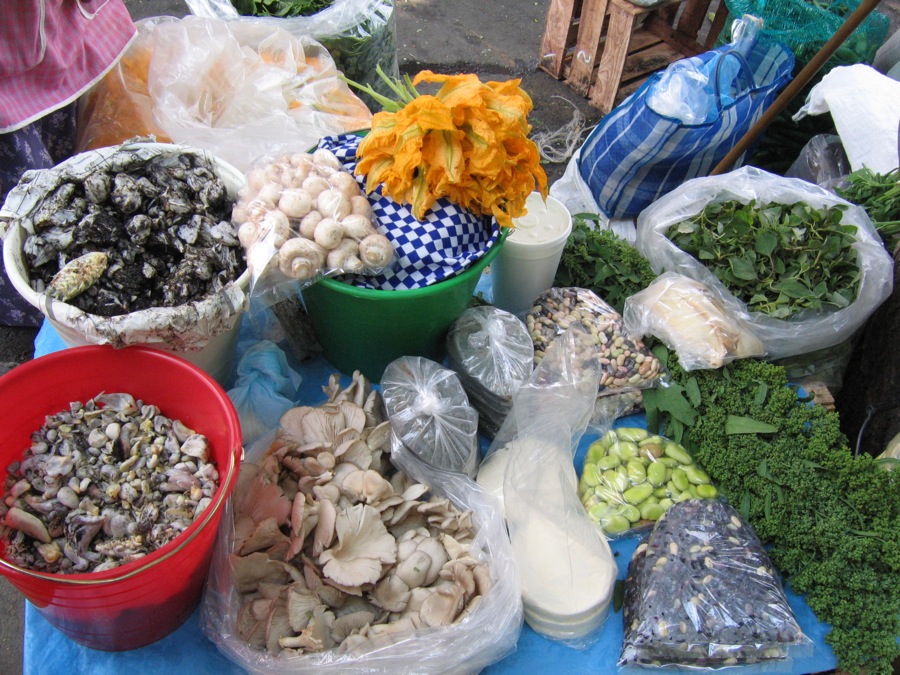
Not to be outdone by the otherwise mostly male équipe,
pastry chef Paulina Abascal provided two delicious desserts, the first
night a sweet corn tart with chocolate fondant and a mango mousse that
was worth a detour all by itself, and the next, a creamy
cinnamon-flavored pudding with a crisp amaranth cookie, on a puddle of
Excellence chocolate. Amaranth is an age-old grain-like seed much
favored by the Aztecs, who called it huautli, for preparing
ritual
drinks and food. Señora Abascal is executive chef for Mexico
City’s
Trico pastry shops as well as host of the popular Pasterleria.mx TV
show.
Other participating chefs were Enrique Olvera, whose Restaurante
Pujol
in Mexico City is considered one of the best in the
country, as his many national awards prove; Ricardo Munoz Zurita, named
by Time magazine as a
prophet and preserver of his country’s culinary
heritage, who not only runs two of the capital’s most popular
restaurants, both named Café
Azul y Oro, but is also the
author
of the Diccionario
Enciclopedio de Gastronomica Mexicana, considered by
many the Larousse of Mexican cuisine; Benito Molina, Executive chef for
three noted restaurants in Ensenada, La
Manzanila, Silvestre and Muelle
Tres; Federico Lopez, co-founder of the Ambrosia Culinary
Academy,
Mexico‘s premiere culinary institute; Guillermo Gonzales
Beristain, chef and owner of Grupo
Pangea, which
creates menus for five of the best restaurants in Monterrey, Mexico,
including the original Pangea, as well as Genoma,
La Catarina, and Bistro
Bardot;
Margarita Salinas, Executive Chef at Don
Emiliano,
and Brisas, both in Los
Cabos, and Gilberto Del Toro Cello, Executive chef
at the Pueblo
Bonito Mazatlan resort.
From January 14 to 18, the Pueblo Bonito Resorts
will host the “Cabo Wine & Food Fest 2009.” The festival will
include elaborate winemaker dinners,
personalized cooking classes with award-winning chefs, special seminars
on the Spirits of Mexico and Wines of Mexico, customized wine tastings,
including a Grand Tasting of the Wines of the World, activities for
families and a variety of Cabo San Lucas inspired activities. The
festival is open to the public and hotel guests. Packages range from
US$180 to US$485. Tickets and packages will be available
for purchase on the Pueblo Bonito Oceanfront Resorts & Spas website
at www.pueblobonito.com.
~~~~~~~~~~~~~~~~~~~~~~~~~~~~~~~~~~~~~~~~~~~~~
Edward
Brivio is a freelance writer who lives in New York.
~~~~~~~~~~~~~~~~~~~~~~~~~~~~~~~~~~~~~~~~~
NEW
YORK CORNER
By John Mariani
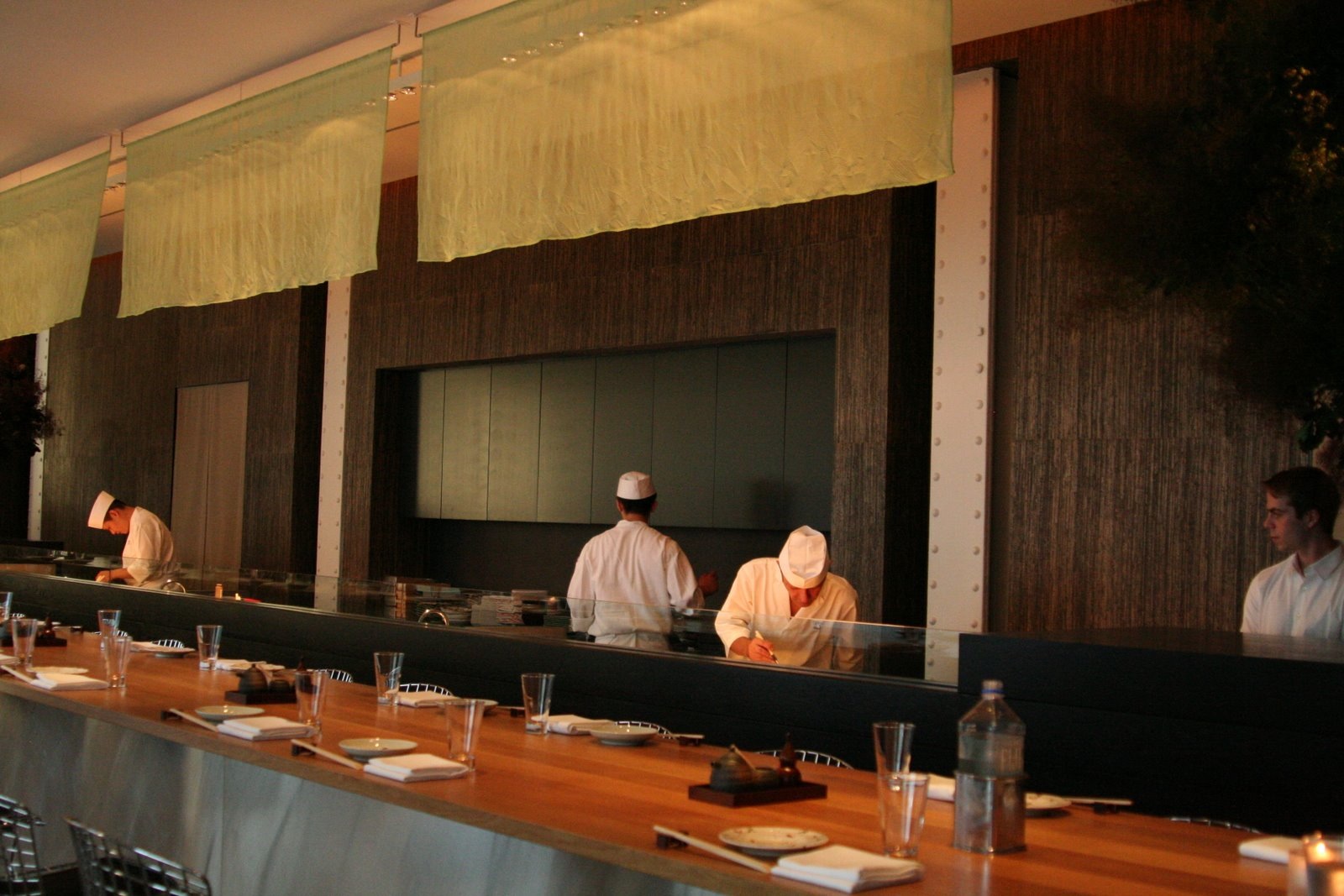 MATSUGEN
MATSUGEN
241 Church Street (near Leonard Street)
212-925-0202
www.jean-georges.com
Star
power is brightest when a nova bursts onto the scene, whether it's in
Hollywood or in the restaurant game, and no one deserved his time in
the spotlight more than Jean-Georges Vongerichten, whose cuisine I have
been praising in Esquire and
other venues since he was chef de cuisine at Restaurant Le Marquis de Lafayette
in Boston (1985) and later at Restaurant
Lafayette in New York (1986). His very personalized JoJo was a bistro like none other
here or in Paris, and it became my pick as "Restaurant of the
Year" for 1991. Vong (1993) was a signal
announcement that Euro-Asian food could be a fine cuisine, and his
flagship Jean-Georges (1997),
where he still cooks when he is in New York, remains one of the finest
dining experiences in America; that year I picked him as "Chef of the
Year."
But, perhaps inevitably, his eyes grew starry and the urgings of his
partners grew stronger to put his name on projects he had little
time to devote his energies to. Some, like Prime Steakhouse in Las Vegas were
over the top but innovative, while others like V Steakhouse in New York and Banc in Houston were
high-end flops. With restaurants in the Bahamas, French
Polynesia, Paris, Shanghai, Chicago, and London, soon Vancouver and
Cabos, and several in New
York itself, including Spice Market and
Perry Street, there were
bound to be hits and misses, and his Chinese restaurant, 66, in TriBeCa, flared
briefly (several Chinese cooks were imported to give it
authenticity, then left within weeks of opening), then petered
out. 66's replacement is Matsugen,
more a contractual agreement than a hands-on Jean-Georges
restaurant, for he has
signed on the Matsushita brothers (below,
with Jean-Georges) who run a
small chain of soba noodle restaurants in Japan and Hawaii.
Upon opening, NY Times critic Frank Bruni rained
down three stars over Matsugen, gushing, "I was riveted by the way
bitter, funky and briny notes in the [bakudan]
dish jousted. And at the end of that same meal, I was riveted by the
one-two punch in a startling dessert that floats cubes of tomato
gelatin in a cold coconut soup. Just as you savor the soup’s silky
sweetness, you bite into a cube and set off a tart explosion."
Others, like Adam Platt of New York Magazine, were not quite
so riveted. Platt gave Matsugen one star, though his review was
generally quite positive. Nevertheless, JG, tactfully, retorted in his blog
that Platt seemed to have "misunderstood the concept behind
Matsugen—it’s commitment to pure, authentic Japanese cooking. Even in
warming up the 66 space, we adhered to minimalist Japanese restaurant
design concepts. Because Matsugen is not like any other restaurant in
New York City, it can’t be compared to other restaurants, including
those in Koreatown. . . . It can’t even be categorized with other
Japanese restaurants in the city. There are no jalapeños, no
California rolls."
That seems fair enough
comment, so you're just going to have to trust your own tastebuds and
decide whether soba noodles with sea urchin at $36 and otoro (bluefin tuna) tataki
$48 is for you. Still, the prices on the sushi, sashimi, and soba
noodles are not really out of whack, with most of the soba dishes
around $15. Portions, as is always the case in Japanese
restaurants, are far from what Americans would ever call generous. You
may leave hungry.
The original minimalist space
designed by
Richard Meier for 66 seems more minimalist still, with the fish tank
intact, and very, very low lighting. The sound level, depending
on where you sit, can be loud or ear-shattering, and a former cocktail
space is now a sushi bar. A few bursts of color would certainly help
the appeal of the décor.
Once
through the massive exterior door, you will be well received by a
highly attractive crew, some Asian, some not, and brought to a bare
table and handed a menu on light brown paper, which doesn't make it any
easier to read in this low lighting. You're going to need a lot
of
time going over the menu because there are scores of items, ranging
from soup and appetizers to salad, tempura, grill dishes, kamameshi items, cold soba, hot
soba, sushi, sashimi, and rolls. Our party ranged all over the map,
choosing from as many categories as possible, beginning with assorted
sashimi ($50 for 16 pieces) and the sushi that
struck me as nothing better than I might have in any of a hundred sushi
bars around town, certainly not on a par with that at Nobu or Masa. So,
too, the tempura vegetables were good if not
special, and the simple cold tofu was, as usual, simply bland. A shrimp
cake with eggplant and shiitakes was delicious, and I wish the portion
were bigger.
The tuna tataki
was superb, very thinly sliced pieces of pale pink tuna belly whose
flavor was so subtle and evanescent it seemed wrong to dip them into
the sauce provided. Kurobuta pork belly was as luscious as I'd
hoped, oozing melting fat with a nice streak of lean. Oddly enough, the
black cod with miso, now a
cliché among Pacific Rim restaurants, was certainly not among
the best I've had elsewhere.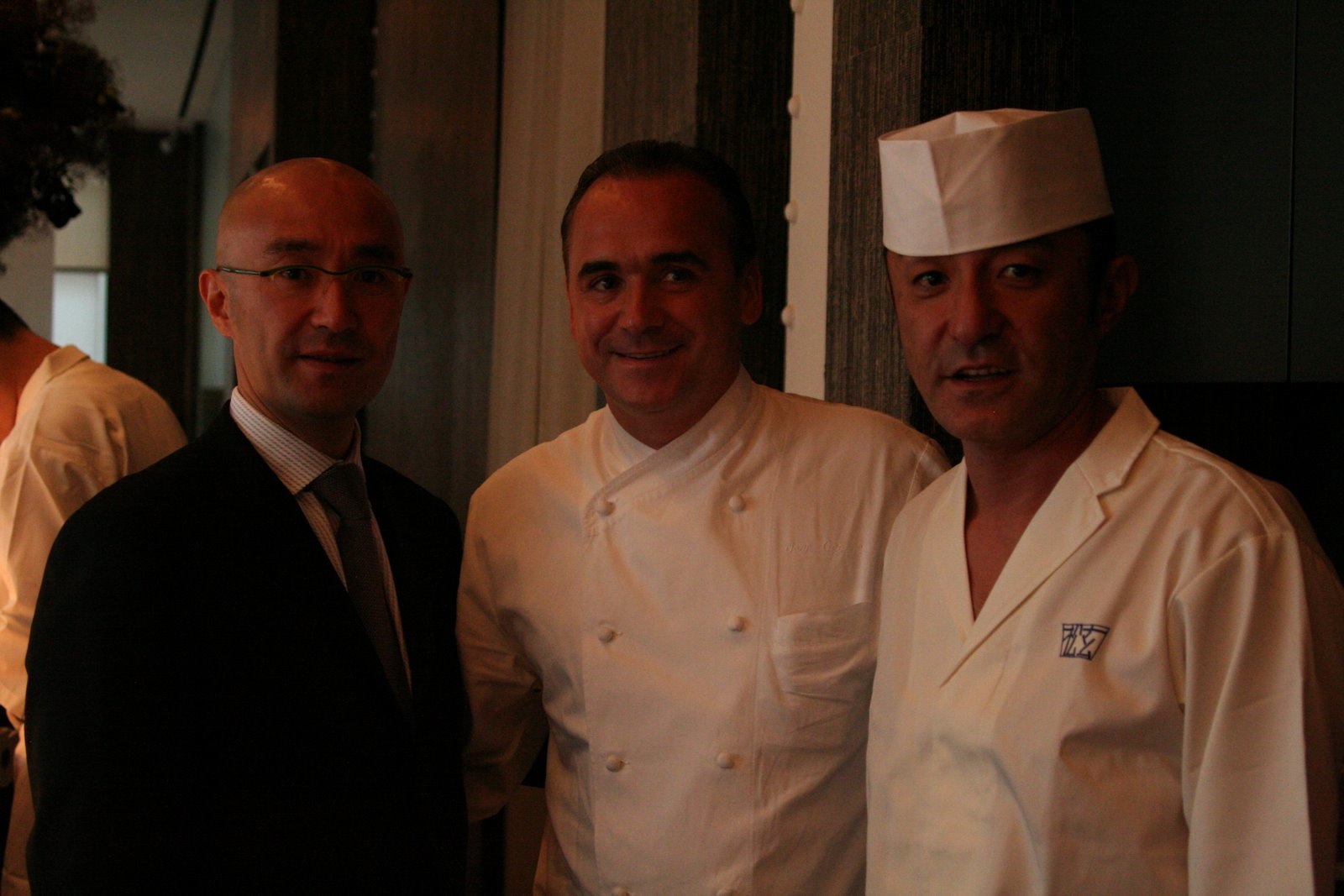
There are three shabu shabu dishes, one with lobster
($52), one with wagyu beef rib-eye ($160!!!), and the one closest
to my budget, Kurobuta pork loin ($52), which was fine enough pork,
though everyone at our table agreed that the simmering broth had about
as much flavor as boiled water--a real
disappointment.
Now, since the focus of the Matsugen
restaurants are those soba noodles (which aficionados will tell you
comes as coarse, medium husk, or no husk), I suppose one ultimately
must judge the New York operation by those items. Perhaps the passion
for soba noodles is an acquired one--I can't say that I crave cold
noodles (except for midnight lasagna)--for, like most noodles, some kind
of sauce or dressing is necessary. So my tablemates and I dutifully
ordered several soba dishes and found that the more sauce we added the
more we liked them, obtuse, perhaps, to the ultra-subtle textures and
tastes of huskiness. Goma-dare
($14), with a sesame sauce, fared best among the cold soba, and kamoseiro ($20), with duck soup,
was pleasing. The best of the hot soba was kamo nanban duck with scallion
($20), because there was plenty of flavor between those two ingredients
to perk up the soba. Some jalapeños wouldn't hurt.
I don't suppose the Matsushita brothers are
dessert masters, so the sweets at the end of the meal have only a
vaguely Pacific flavor, like the awful green tea brûlée.
You can
run up a very small or a very large bill at Matsugen, since everything
is à la carte (there is a 7-course omakase tasting menu at $85).
although you'll have to order a lot of food in order to sate your
hunger here. A couple of bowls of soba noodles is just not going to do
it for dinner, maybe at lunch.
So, we shall see if New Yorkers develop
a new soba lust at a time when Asian noodle places are popping up
everywhere south of 14th Street. Matsugen gives off the strong
scent of chic right now, but that might not be enough to make up for
some other weak Japanese dishes here that do little to distinguish this
hot new spot from so many other fine Japanese restaurants around town.
Matsugen is open for lunch Tues.-Sun, and
for dinner nightly.

AND
HE WORKS FOR PEANUTS!
In Utsunomia, Japan, restaurateur Kaoru Otsuka has a monkey named
Ya-Chan serve drinks to customers and performs a dance for them,
contending that the monkey picked up the skills himself by watching
other servers. You may watch the simian waiting on tables on You Tube: http://news.ninemsn.com.au/article.aspx?id=562718.
WHY
THERE’LL ALWAYS BE A FRANCE!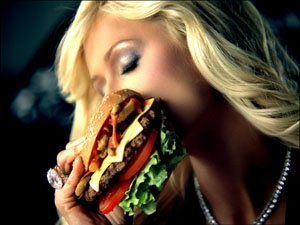
“It has the taste of the forbidden, the illicit — the subversive,
even,” said Hélène Samuel, a restaurant consultant here.
“Eating with your hands, it’s pure regression. Naturally, everyone
wants it.”—“In Paris, Burgers Turn Chic,” NY
Times.
QUICK
BYTES
*
On Sept. 18 in Alexandria, VA, The
Neighborhood Restaurant Group
and Outstanding in the Field
have partnered to offer an al fresco farm
dinner celebrating this region’s local bounty at the George Washington
Birthplace National Monument near the town of Montross. Vermilion
Executive Chef Anthony Chittum does a 5-course dinner at $180 pp.
Call
703-684-9669; visit www.vermilionrestaurant.com
* On Sept. 24 in Brooklyn, NY, The Red Hook Initiative will be hosting the 2nd annual “A Taste of Red Hook” dine-around featuring Brooklyn-based restaurants incl. Annabelle’s, Mazzat, The Good Fork, Baked, Blue Marble, Defonte’s, Tini Wine Bar Cafe, Alma, Margaret Palca Bakes, Ferdinandos Focacceria, Viva, and Hope and Anchor. Hometown Brooklyn Brewery. $100 pp in advance; $125 at the event. Visit http://rhicenter.org/events.php.
* From Sept. 26-Nov. 9 in Lake Buena
Vista, FL, the 13th annual Epcot
International Food & Wine Festival at Walt Disney World Resort
opens with 8 of the country’s top chef teams ompete at the
gold-standard Bocuse d’Or USA semifinals. Also, guests can
explore the culinary “Cities in Wonderland” showcasing tastes from 6
continents. More than 25 international marketplaces will serve
tapas-sized portions of regional specialties and recommended wines and
beers; Eat to the Beat! concert series featuring a varied lineup
of classic rock, soul, R&B, oldies, jazz and funk hit-makers; Some
250 Disney chefs and guest chefs conducting culinary demos, elegant
dinners, and tasting events. Visit www.disneyworld.com/food.
* On Sept. 26 in Arlington Heights, ILL, Le Titi de Paris will hold its
annual Champagne & Sparkling Wines of France Dinner. $95 pp.
Call 847-506-0222.
* Morton's The Steakhouse announces
plans to host a series of special events its steakhouses across the USA
to celebrate the 30th anniversary of Morton's with a commitment to
raise a minimum of $125,000 for the Make-A-Wish Foundation®.
Morton’s in Buckhead and Downtown Atlanta plan to raise enough funds to
grant a local wish. The Buckhead, GA, location will host a special
anniversary event on Oct. 4 in the restaurant’s boardrooms
upstairs and will include a cocktail reception and dinner. $175 pp.
with $50 of each ticket to the Make-A-Wish Foundation.
* Maison
Akira in Pasadena , CA, is celebrating its 10th anniversary with
a month-long series of special dinners during the month of October.
Owner Akira Hirose will begin the month with a reunion of other
L'Orangerie alumni besides himself including Jean Francois Meteigner of
La Cachette and Yvan Valentin of Sweet Temptations. 4 courses ($90 pp,
r $130 with wine pairing. Oct. 2 Kaiseki Bento Night menu and
throughout the month 4 courses $60 or 5 courses $80. Call
626-796-9501.
* October is Breast Cancer Awareness Month, so more than 50 Chicago-area restaurants and others will participate in The Lynn Sage Foundation’s Chicago’s In Good Taste campaign to fundraise for breast cancer research. More than 50 Chicagoland restaurants will ask customers to donate $1 per check to The Lynn Sage Foundation. For more information, email info@lynnsagefoundation.org , call 312.347.1706 or visit www.lynnsagefoundation.org.
* On Oct. 1 Autism Speaks Co-founders Suzanne
and Bob Wright, Tom Colicchio, Chef and Owner of Craft Restaurants, and
Brian Williams, anchor of NBC Nightly News, will host an evening of
fine dining and entertainment for a worthy cause. Autism Speaks
to Wall Street: 2nd Annual Celebrity Chef Gala, with a live musical
performance by Harry Connick, Jr. and 60 y of the nation’s chefs at
Cipriani Wall Street . Tix start at $1,500 –$100,000 for a VIP
table. Call 212-252-8584.
* On Oct. 1
Alden-Houston hotel’s *17
restaurant sommelier Evan Turner has selected 9 Greek wines that pair
with *17 Executive Chef Wes Morton’s 7- seven course Greek dinner, at
$150 pp, with a special $169 room rate. Call 832-200-8843 or
visit www.aldenhotels.com.
* During the month of October, Virginia’s 130+ wineries, hotels and resorts will offer guests unique opportunities to experience the 20th Anniversary of Virginia Wine Month, with a variety of travel package and getaway ideas, incl. Norton Bluegrass Festival, Pet-Friendly Wine Travel, Drink Wine Under the Stars, Mt Vernon's annual Wine festival and Sunset Tour, Hot Air Ballon and Wine Festival, Women Wild About Wine at The Tides Inn, Wine Aficionado Wine Tour, et al. Visit www.Virginia.org/wine.
* NYC’s Babbo Pastry Chef Gina DePalma is teaming with sommelier and chef Paul Lang for a one-week gourmet tour of Tuscany, Oct. 6-13: “A Casa In Italia,” with a stay in a 16th-century Renaissance villa on the wine estate Tenuta di Capezzana, hands-on Tuscan cooking classes, tastings of local wines and olive oils, and excursions, a natural thermal spa, guided tour of the private Contini Bonacossi collection in Florence's Uffizi, and visit to the vineyards and cellars of the Capezzana estate. Fee incl. accommodations, transportation and airport transfers, all meals, cooking classes, art and cultural tours. Visit www.acasainitalia.com.
* On Oct. 7 Wines from Spain will hold its
1"5th annual Great Match: Wine & tasting tour "at the Metropolitan
Pavilion in NYC with proceeds to go to New York Cares, Chef
José Andrés, host of the PBS series “Made In Spain,” will
be joined by 10 NYC area chefs, each of whom will prepare small
signature dishes , with more than 300 current release wines. $70
pp.Visit www.greatmatch.org or call 1-888-772-4694.
Everett Potter's Travel Report:

~~~~~~~~~~~~~~~~~~~~~~~~~~~~~~~~~~~~~~~~~~~~~~~~~~~~~~~~~~~~~~~~~~~~~~~~~~
Eating Las Vegas is the new on-line site for Virtual Gourmet contrinbutor John A. Curtas., who since 1995 has been commenting on the Las Vegas food scene and reviewing restaurants for Nevada Public Radio. He is also the restaurant critic for KLAS TV, Channel 8 in Las Vegas, and his past reviews can be accessed at KNPR.org. Click on the logo below to go directly to his site.
~~~~~~~~~~~~~~~~~~~~~~~~~~~~~~~~~~~~~~~~~~~~~~~~~~~~~~~~~~~~~~~~~~~~~~~~~~~
Tennis Resorts Online: A Critical Guide to the World's Best Tennis Resorts and Tennis Camps, published by ROGER COX, who has spent more than two decades writing about tennis travel, including a 17-year stretch for Tennis magazine. He has also written for Arthur Frommer's Budget Travel, New York Magazine, Travel & Leisure, Esquire, Money, USTA Magazine, Men's Journal, and The Robb Report. He has authored two books-The World's Best Tennis Vacations (Stephen Greene Press/Viking Penguin, 1990) and The Best Places to Stay in the Rockies (Houghton Mifflin, 1992 & 1994), and the Melbourne (Australia) chapter to the Wall Street Journal Business Guide to Cities of the Pacific Rim (Fodor's Travel Guides, 1991). THIS WEEK: A Report on The Four Seasons Jackson Hole. Click on the logo below to go to the site.

~~~~~~~~~~~~~~~~~~~~~~~~~~~~~~~~~~~~~~~~~~~~~~~~~~~~~~~~~~~~~~~~~~~~~~~~~
MARIANI'S VIRTUAL GOURMET NEWSLETTER is published weekly. Editor/Publisher: John Mariani.
Contributing Writers: Robert Mariani,
Naomi
Kooker, John A. Curtas, Edward Brivio, Mort
Hochstein, Suzanne Wright. Contributing
Photographers: Galina Stepanoff-Dargery, Bobby Pirillo. Technical
Advisor: Gerry McLoughlin.
Any of John Mariani's books below
may be ordered from amazon.com by clicking on the cover image.
 My
newest book, written with my brother Robert Mariani, is a memoir of our
years growing up in the My
newest book, written with my brother Robert Mariani, is a memoir of our
years growing up in the For those of you who don't think of the Robert and I think you'll enjoy this very personal look at our --John Mariani |
 |
 |
 |
 |
 |
 |
© copyright John Mariani 2008
